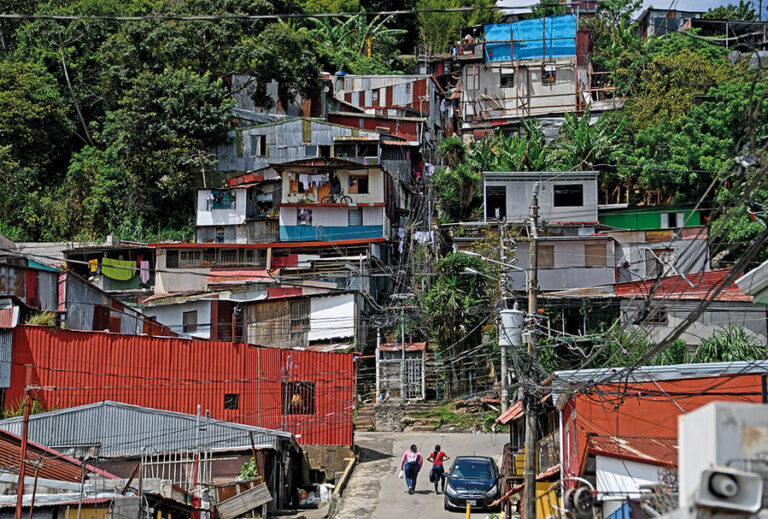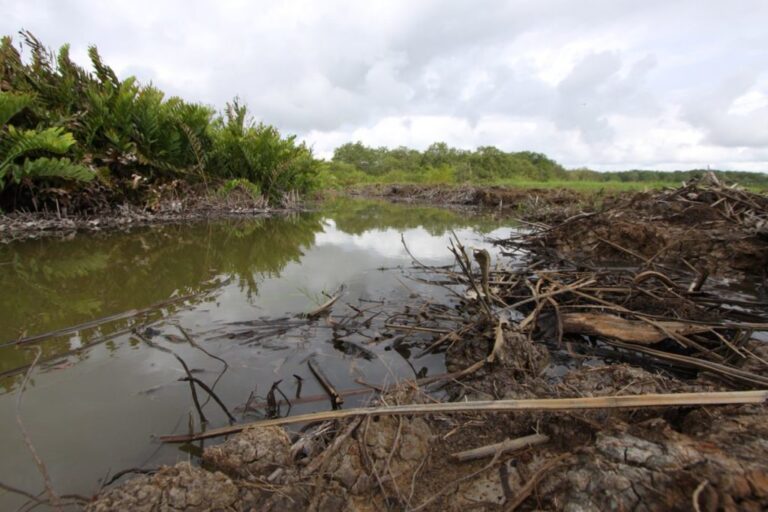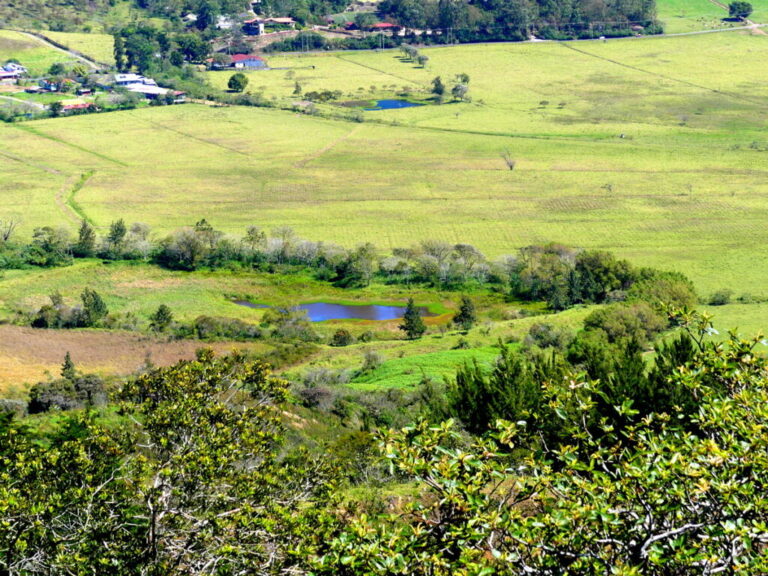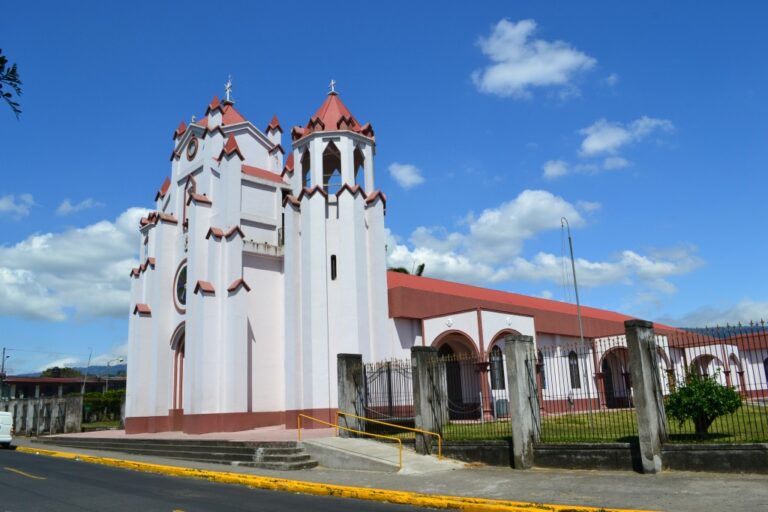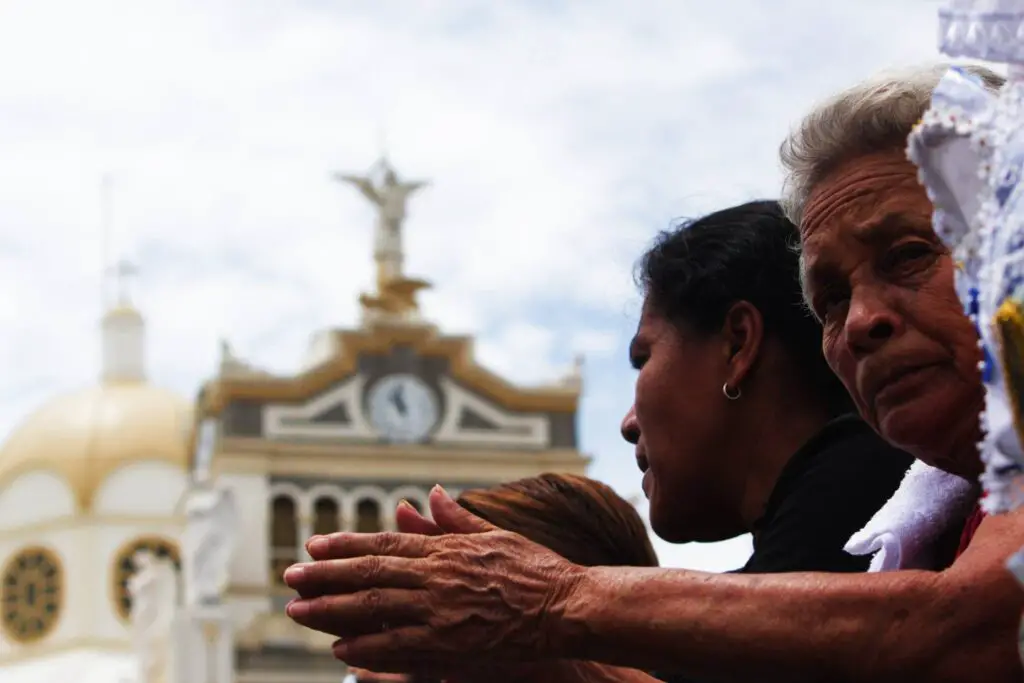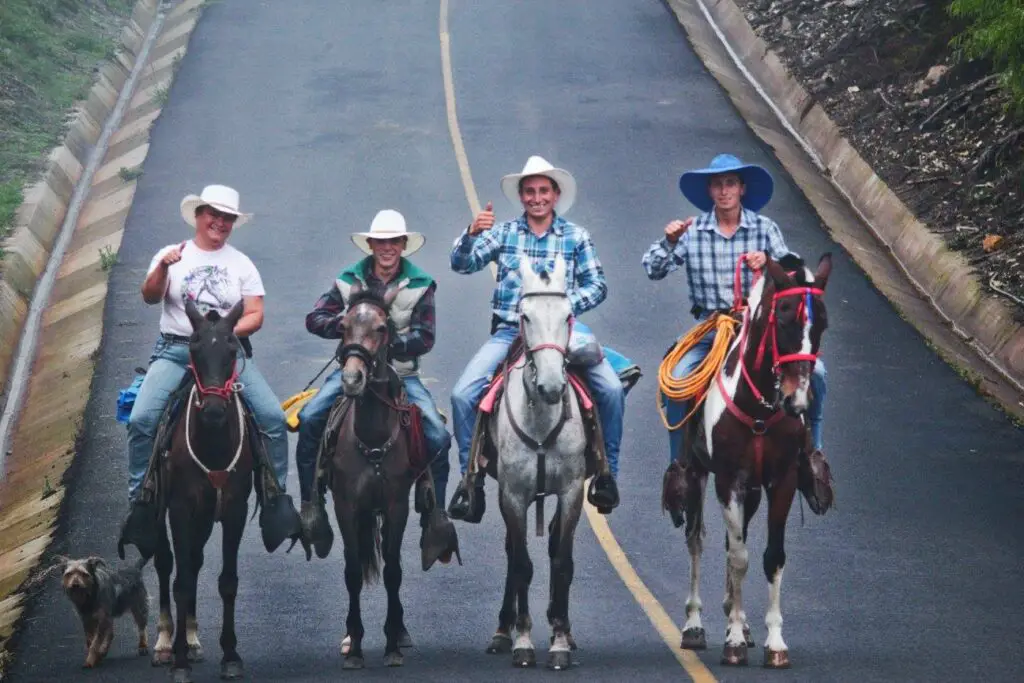The Gandoca-Manzanillo Wildlife Refuge, located in Costa Rica’s southern Caribbean, has been at the center of a major environmental and political controversy in recent months. What began as local concerns over deforestation has evolved into a national scandal, involving high-profile arrests, judicial investigations, and accusations of corruption within key government institutions. At the heart of the issue is the apparent mismanagement of 188 hectares of protected land, including forests and wetlands, which were allegedly transferred to private interests for development purposes.
This case gained further attention due to the involvement of businessman Allan Pacheco Dent, a neighbor of President Rodrigo Chaves, who is accused of benefiting from irregular permits granted to allow the logging of trees within the refuge. The situation raises serious concerns about the integrity of environmental protections in Costa Rica, a country known for its leadership in conservation, and highlights broader issues of land use, governmental accountability, and the intersection of private and political interests.
As investigations continue, with the involvement of the National System of Conservation Areas (SINAC) and the judiciary, questions about the future of Gandoca-Manzanillo—and the wider implications for Costa Rica’s environmental governance—remain pressing.
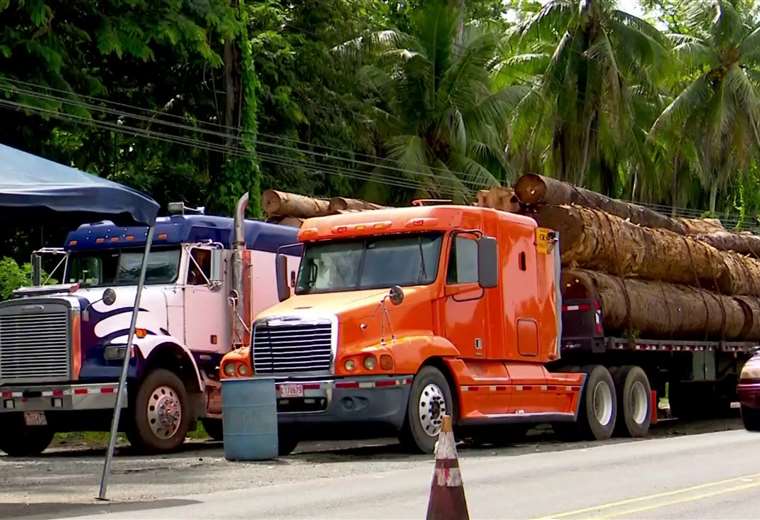
1. Background of Gandoca-Manzanillo Wildlife Refuge
The Gandoca-Manzanillo Wildlife Refuge is one of Costa Rica’s most ecologically significant protected areas, located on the southern Caribbean coast near the border with Panama. It spans over 5,000 hectares of land and sea, encompassing a variety of ecosystems such as tropical rainforests, wetlands, mangroves, and coral reefs. These ecosystems are home to an impressive range of biodiversity, including endangered species like the leatherback sea turtle, West Indian manatee, and jaguars.
Ecological Importance
This refuge is a haven for wildlife and biodiversity conservation. Its wetlands provide crucial habitats for migratory birds, while the coral reefs and seagrass beds support marine life. The refuge is particularly noted for being one of the few places where four species of sea turtles—hawksbill, green, leatherback, and loggerhead—come to nest on its beaches Semanario Universidad. The protection of these habitats is critical for maintaining biodiversity and supporting ecological balance, not only for local species but also for migratory wildlife.
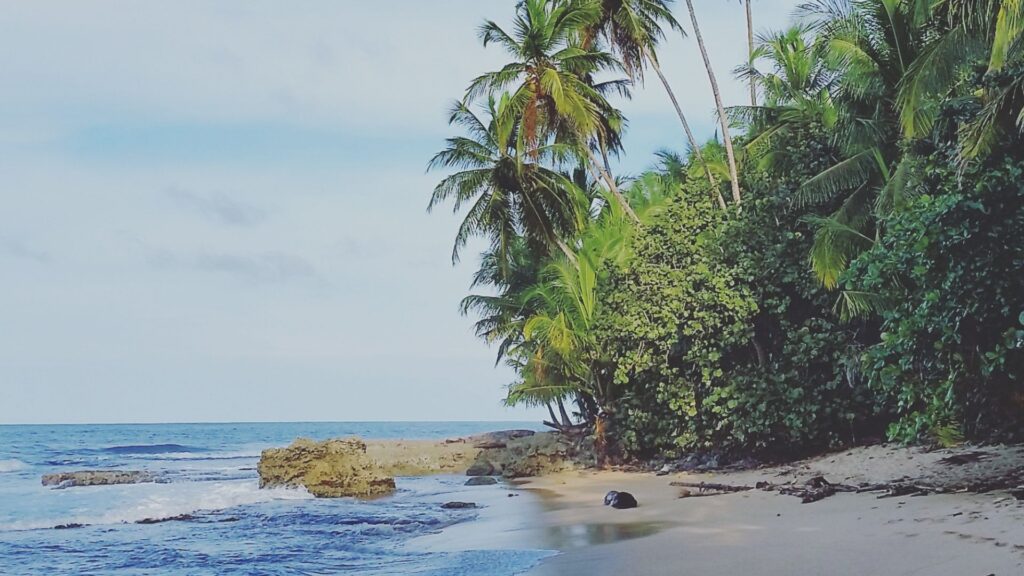
Legal Protections
Designated as a wildlife refuge in 1985, Gandoca-Manzanillo was created under Costa Rican law to ensure the conservation of its unique ecosystems. It forms part of the larger La Amistad-Caribe Conservation Area, which has been recognized for its rich natural resources. However, the protection of this area has been compromised by various legal challenges and legislative changes. In 2014, a controversial law allowed for the removal of 188 hectares of protected land from the refuge, which subsequently led to their transfer to private ownershipTico Times | mgd.
This law, known as the Law of Recognition of the Rights of the Southern Caribbean Inhabitants (Law 9223), was initially intended to provide land for local residents. However, it later became a legal loophole through which real estate developers and business interests gained control over valuable land, bypassing the original conservation goals. Despite a ruling by Costa Rica’s Constitutional Court in 2019 that declared the law unconstitutional and called for the return of these lands to public control, the order has yet to be fully enforced Tico Times.
The case of Gandoca-Manzanillo is a reminder of the ongoing tension between conservation efforts and economic development, as well as the critical role of institutional governance in safeguarding protected areas from exploitation.
2. The Controversy: What Happened?
The controversy surrounding Gandoca-Manzanillo Wildlife Refuge erupted when it was revealed that several irregularities had occurred in the handling of land and forest resources within the protected area. Central to this issue is the deforestation and change of land use facilitated by permits that were allegedly issued unlawfully. The deforestation in question affected 188 hectares of forest and wetlands that had been excluded from the refuge’s protection following the passing of Law 9223 in 2014 Semanario Universidad Tico Times.
Key Events
In July 2024, authorities arrested Allan Pacheco Dent, the legal representative of Playa Manzanillo S.A., alongside other officials, following a series of judicial investigations. The detentions were part of a broader investigation into alleged crimes such as prevarication, influence against public finances, ideological falsification, and the illegal granting of permits for logging. Semanario Universidad Tico Times.
According to the prosecution, permits for logging were granted under dubious circumstances, involving officials from SINAC and local municipalities, who allegedly facilitated the development of urban infrastructure at the expense of forested areas Tico Times mgd.
In particular, Pacheco Dent sought authorization to cut down trees on a property that initially had been classified as agroforestry land without forest cover. However, aerial and satellite imagery suggested otherwise, showing that the land was indeed covered by forest Semanario Universidad This case represents not only a failure in environmental oversight but also an apparent manipulation of land-use designations to favor private interests over conservation efforts.
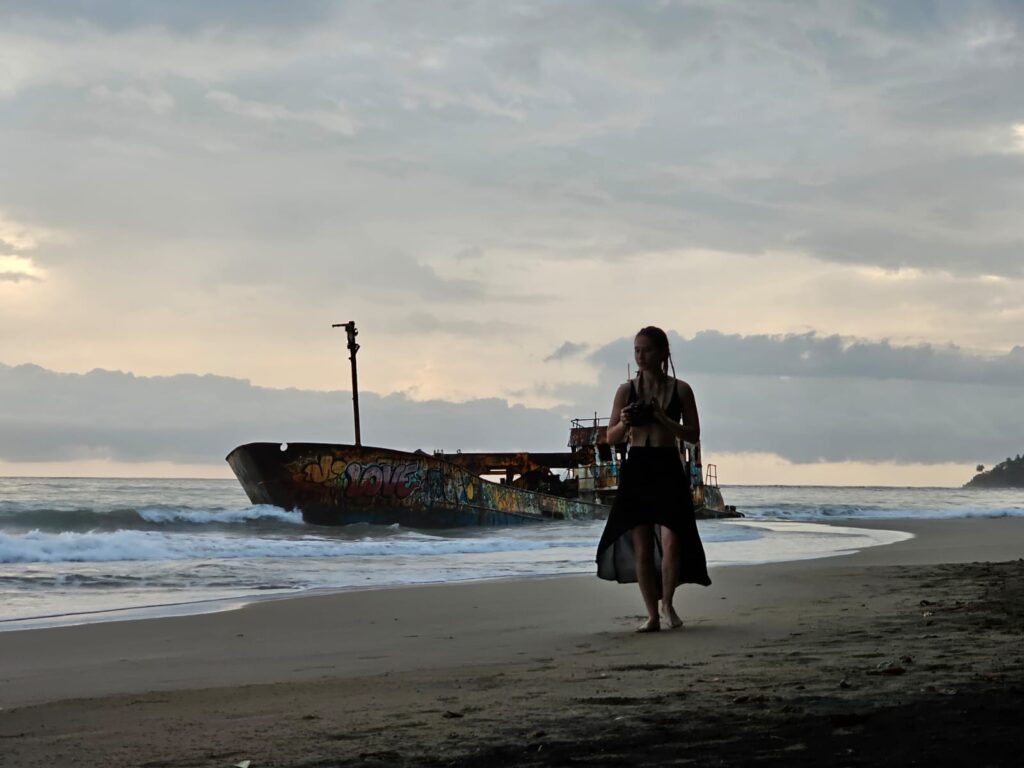
Involved Figures
At the center of this controversy is Allan Pacheco Dent, a businessman and neighbor of Costa Rican President Rodrigo Chaves. Pacheco Dent’s company, Playa Manzanillo S.A., was implicated in the unlawful logging activities in Gandoca-Manzanillo. His ties to the president and the government have further escalated public concern. Pacheco Dent’s properties have been used for government events, including social gatherings involving high-ranking officials, adding to suspicions of political favoritism and influence peddling Tico Times Cambio Político.
SINAC and municipal authorities have also come under fire for their roles in granting these logging permits. Officials from SINAC, who are tasked with overseeing Costa Rica’s protected areas, were accused of allowing these permits despite clear legal protections for the refuge. Several officials, including a SINAC representative and a forest engineer, were also arrested as part of the investigation mgd.
The environmental destruction in Gandoca-Manzanillo, paired with political connections, has turned this issue into a national scandal, highlighting the fragility of Costa Rica’s environmental laws when faced with corruption and powerful interests.
3. Legal and Judicial Actions
The situation at Gandoca-Manzanillo escalated significantly in 2024 when legal investigations uncovered a range of environmental and administrative violations. These actions led to multiple arrests and ongoing judicial processes aimed at addressing the illegal deforestation and land-use changes within the refuge.
Arrests and Investigations
On July 16, 2024, a major turning point occurred when businessman Allan Pacheco Dent, along with several other individuals, was arrested on charges related to illegal deforestation and the improper issuance of permits. These individuals, including a SINAC official and a forest engineer, were charged with serious crimes such as prevarication, influence against public finances, land-use alteration, and the use of false documents Semanario Universidad mgd
Pacheco Dent’s involvement drew significant attention due to his business dealings and close ties to President Rodrigo Chaves. The investigation, led by Costa Rica’s Environmental Prosecutor’s Office and supported by the Judicial Investigation Agency (OIJ), exposed a web of corruption in which government officials, local authorities, and private companies conspired to bypass environmental protections in Gandoca-Manzanillo Tico Times. Specifically, SINAC officials were accused of facilitating the issuance of logging permits that were in direct violation of Costa Rican environmental law, which prohibits the exploitation of forested areas in protected regions like Gandoca-Manzanillo.
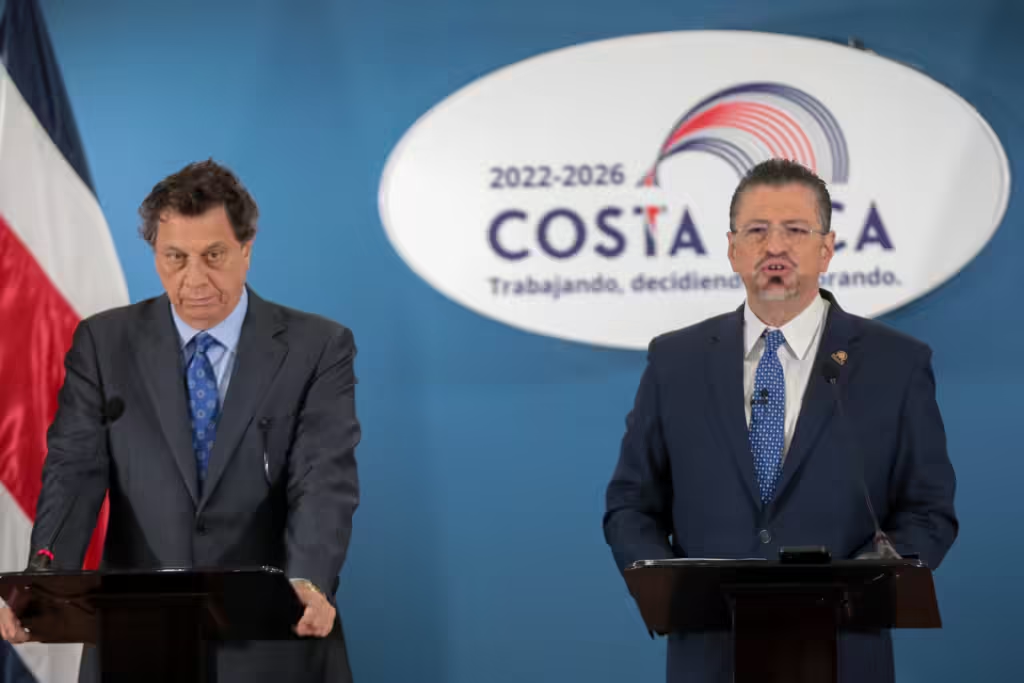
Institutional Failures
Key institutions responsible for safeguarding Costa Rica’s natural heritage, including SINAC and the Ministry of Environment and Energy (MINAE), have come under intense scrutiny for their roles in enabling the illegal activities in Gandoca-Manzanillo. The lack of proper enforcement of court rulings further exacerbated the issue. Despite a 2019 ruling by Costa Rica’s Constitutional Court, which declared the transfer of 188 hectares of protected land to private ownership unconstitutional, the necessary actions to recover and restore these lands were not fully implemented Tico Times Cambio Político
As a result, judicial authorities have been tasked with not only prosecuting those involved in the illegal deforestation but also ensuring that the stolen lands are returned to public control. The Attorney General’s Office is currently investigating the broader implications of these land transfers, with a focus on whether these actions constitute land trafficking and whether additional officials or business interests were involved in the scheme. Cambio Político
Environmental Damage and Public Outcry
In addition to the legal repercussions, the environmental destruction caused by these illegal activities has sparked widespread public outrage. Environmental organizations and local residents have voiced their concerns over the loss of biodiversity, the destruction of wetlands, and the long-term consequences of deforestation in the region. Videos and reports documenting the logging operations have circulated widely, drawing attention to the urgent need for stronger environmental protections and enforcement mgd Cambio Político
As the legal process continues, the case has become a symbol of the broader challenges facing Costa Rica in balancing economic development with environmental conservation, raising critical questions about the future of protected areas in the country.
4. Environmental Impact
The Gandoca-Manzanillo case has brought to light the devastating effects of deforestation and land mismanagement in one of Costa Rica’s most biodiverse regions. The unauthorized logging and land-use changes have caused significant damage to both the local ecosystem and the broader environmental balance of the area. As the country continues to grapple with these issues, the long-term consequences for the region’s wildlife and natural habitats have become a central concern for both environmentalists and the local community.
Deforestation and Habitat Loss
The illegal tree cutting within the Gandoca-Manzanillo Wildlife Refuge has severely impacted the forest and wetland ecosystems that are critical to the survival of numerous species. These habitats provide shelter, breeding grounds, and food sources for a wide variety of wildlife, including endangered species such as sea turtles, manatees, and jaguars Tico Times. Cambio Político
The clearance of forested areas not only disrupts these species’ natural habitats but also contributes to soil erosion, water pollution, and the degradation of wetlands, which play a crucial role in regulating the local environment.
Environmental experts have warned that the illegal activities in Gandoca-Manzanillo could result in irreversible damage to the region’s biodiversity. Wetlands, for instance, are vital for maintaining water quality, preventing flooding, and supporting a range of plant and animal life. As these ecosystems are degraded, the surrounding communities may also face increased risks of flooding and reduced access to clean water. mgd.
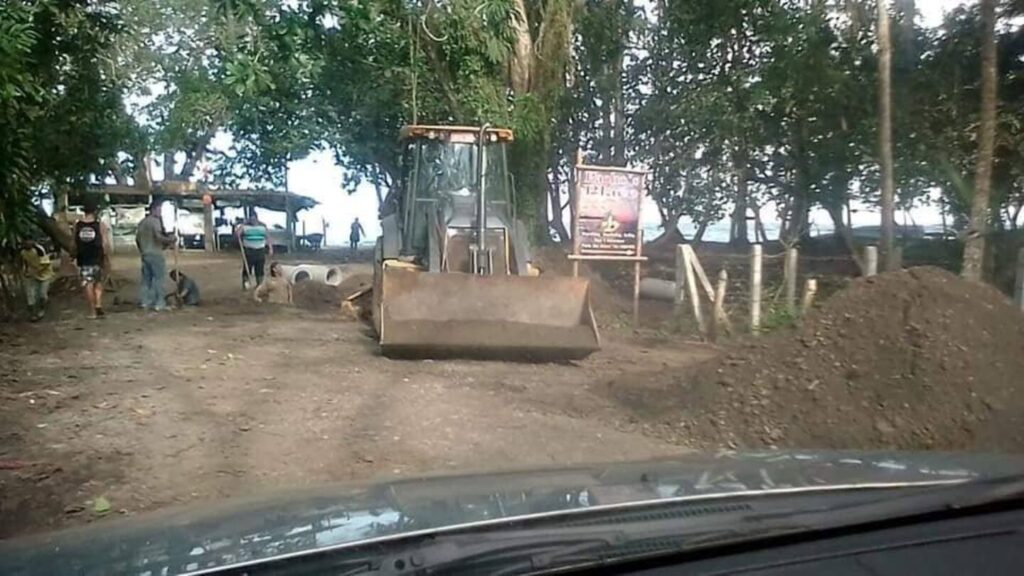
Public Reaction
The ecological destruction has sparked public outrage both locally and nationally. Environmental groups, including Fecon (Federación Ecologista Costarricense), have raised alarms about the extent of the damage and have called for stronger legal and regulatory measures to prevent further harm to the environment. Many local residents, particularly those who rely on the natural landscape for their livelihoods, such as through eco-tourism, have also expressed their concern over the loss of natural resources. Tico Times Cambio Político.
Activists have organized protests and media campaigns, disseminating videos and reports that document the illegal logging operations. These actions have pressured the government to respond more transparently and to implement stricter enforcement of environmental protections. In addition, some organizations are pushing for the restoration of the damaged areas, calling for reforestation projects and stricter penalties for those responsible for the destruction Tico Times Cambio Político
Long-term Environmental Consequences
The long-term environmental consequences of the activities in Gandoca-Manzanillo could be profound. As forested areas are cleared, the loss of carbon sinks contributes to climate change by reducing the region’s ability to absorb carbon dioxide from the atmosphere. Additionally, the destruction of biodiversity threatens the balance of the entire ecosystem, with ripple effects that could harm other species in the region and even affect marine environments due to the proximity of the refuge to coastal areas mgd
Moving forward, the environmental recovery of Gandoca-Manzanillo will depend on the enforcement of conservation laws, the rehabilitation of damaged ecosystems, and the protection of vulnerable species. The broader implications of this case suggest that Costa Rica must continue to strengthen its environmental governance to safeguard its natural heritage from exploitation and degradation.
5. Political Ties and Influence
The Gandoca-Manzanillo controversy gained additional complexity and public attention due to the involvement of prominent political figures, notably Allan Pacheco Dent’s connections to President Rodrigo Chaves. These ties have led to allegations of influence peddling and favoritism, raising concerns about the intersection of business interests and political power in the management of Costa Rica’s natural resources.
Connection to the Government
The relationship between Allan Pacheco Dent, the businessman at the center of the illegal deforestation case, and President Rodrigo Chaves has become a focal point in the investigation. Pacheco Dent, who is the representative of Playa Manzanillo S.A., not only resides near the president but also has a history of social and professional interactions with him. It was revealed that properties belonging to Pacheco Dent’s family were used by the government for several official events, including a cabinet party in 2022 and training sessions for the Unidad Especial de Intervención (UEI), a police unit under the Ministry of the Presidency Tico Times mgd.
The discovery that Pacheco Dent visited the Casa Presidencial on multiple occasions between 2022 and 2023 has added to suspicions about whether his business dealings were influenced by these personal ties. While President Chaves has publicly denied any involvement in the illegal activities, critics and opposition politicians have questioned the extent of the president’s knowledge and whether these permits were granted as part of a broader network of favoritism and influence peddling Cambio Político.
During public statements, President Chaves acknowledged that Pacheco Dent was a neighbor but rejected claims that his proximity or personal interactions had any bearing on the issuance of permits. Chaves emphasized that if any wrongdoing was found in the permit process, it would be dealt with by the justice system. However, his defense has done little to quell public doubts, especially in light of the arrests of high-ranking officials from the Ministry of Environment and SINAC who were directly involved in issuing these controversial permits mgd Cambio Político.
Allegations of Favoritism
The public outcry over this case is also fueled by the appearance of double standards in the enforcement of Costa Rica’s environmental regulations. Critics argue that while everyday citizens and small businesses are held accountable for environmental infractions, larger business interests with political connections appear to benefit from loopholes and special treatment. For example, the permits granted to Pacheco Dent’s company were reportedly facilitated by irregularities in land-use designations and false environmental impact assessments, allowing the company to exploit protected areas with relative ease.Tico Times.
Opposition lawmakers, such as Ariel Robles from the Frente Amplio party, have been vocal in their accusations, suggesting that the government allowed Pacheco Dent and other powerful individuals to sidestep environmental laws for personal gain. Cambio Político
Robles and other political figures have called for deeper investigations into the links between political leaders, business elites, and the weakening of environmental protections in Costa Rica’s protected areas.
Statements from the President
President Chaves has consistently defended his administration’s actions, framing the accusations as part of a politically motivated smear campaign. He has questioned the legitimacy of the legal actions taken against Pacheco Dent, downplaying the scale of the deforestation and casting doubt on the motives of those who have accused him of complicity Tico Times
. However, this response has only fueled further criticism, particularly from environmental groups and opposition politicians, who argue that the president’s statements reflect a lack of commitment to protecting Costa Rica’s natural resources Cambio Político
Despite the president’s denials, the ongoing investigation continues to raise questions about the role of political influence in undermining environmental laws and enabling large-scale deforestation in Gandoca-Manzanillo. The case has become a symbol of the tension between economic development and environmental conservation, highlighting the challenges of enforcing laws in the face of powerful political and business interests.
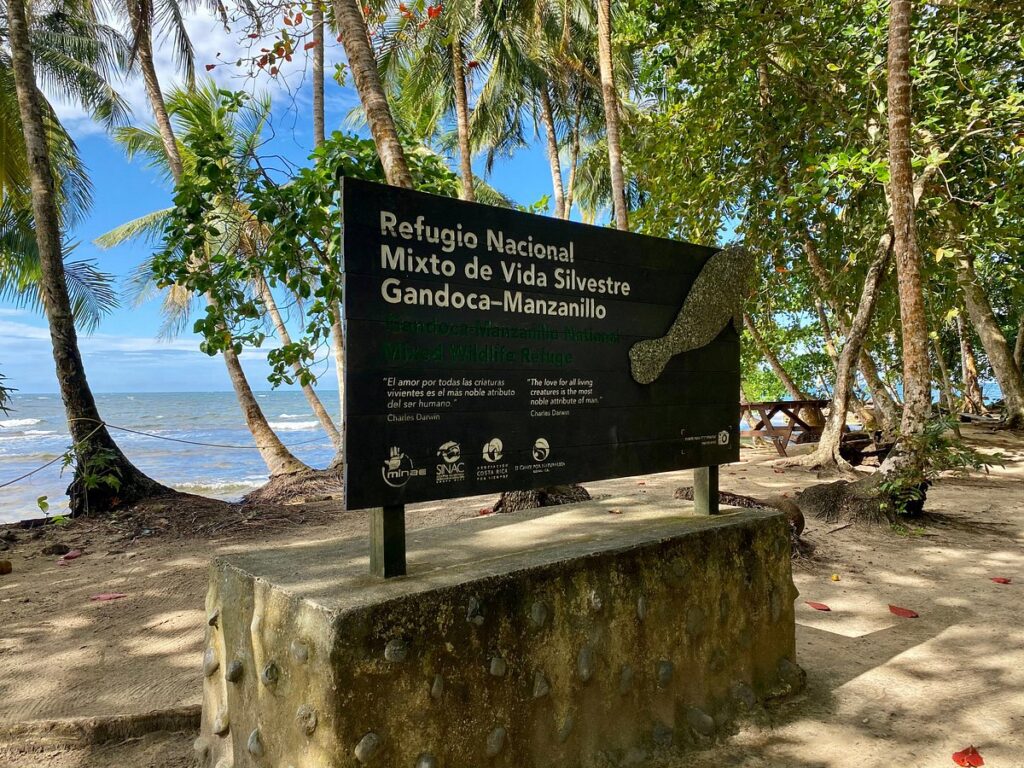
6. Current Status and Next Steps
As of late 2024, the Gandoca-Manzanillo case remains an ongoing legal battle, with multiple layers of investigations and judicial proceedings yet to be resolved. The case has not only highlighted the environmental and political challenges faced by Costa Rica but also prompted widespread calls for stronger oversight and enforcement of environmental protections.
Ongoing Investigations
The Attorney General’s Office continues to investigate the full scope of irregularities that occurred in the granting of logging and land-use permits in Gandoca-Manzanillo. The primary focus remains on the illegal deforestation within the 188 hectares of protected land, and the role played by SINAC officials and business entities in facilitating the removal of environmental protections. Judicial authorities are looking into whether there is evidence of land trafficking, with the intent to return the misappropriated lands to public ownership as mandated by the 2019 Constitutional Court ruling Tico Times Cambio Político.
Despite the arrests and the suspension of logging activities, environmental groups remain vigilant, fearing further encroachment on protected areas. Legal action has also been taken to halt any ongoing development plans, particularly in areas previously protected by the Gandoca-Manzanillo Wildlife Refuge. The judicial system has been asked to enforce stricter penalties and prevent future illegal activities that could further damage Costa Rica’s reputation as a leader in environmental conservation.mgd Cambio Político.
Calls for Institutional Reform
The public outcry generated by this case has placed significant pressure on SINAC and other government bodies responsible for managing Costa Rica’s natural resources. Critics argue that institutional weaknesses and corruption within these organizations have allowed illegal activities to flourish in protected areas. Environmentalists and political leaders alike have called for institutional reforms, including stricter oversight of land-use designations and more transparent procedures for granting permits.Tico Times
One of the key areas of focus is the need for improved enforcement of existing environmental laws. Although Costa Rica has a strong legal framework for protecting its natural resources, this case demonstrates the challenges in ensuring that these laws are applied consistently and fairly. The government has been urged to increase funding for conservation efforts and to invest in better monitoring technologies, such as satellite imagery, to track illegal deforestation and land-use changes. Cambio Político.
Efforts Toward Environmental Restoration
As the judicial process unfolds, several initiatives have been proposed to restore the damaged areas within the Gandoca-Manzanillo refuge. Environmental organizations have called for large-scale reforestation projects, particularly in the wetlands and forested areas that were cleared illegally. These efforts aim to rehabilitate the ecosystems and support the recovery of endangered species that have been affected by the deforestation Tico Times Cambio Político.
Furthermore, some political leaders have proposed the creation of stronger buffer zones around protected areas to prevent future encroachments by private developers. These zones would act as an additional layer of protection, ensuring that vulnerable ecosystems remain intact despite pressures from real estate interests.
Future Legal and Political Implications
Looking ahead, the Gandoca-Manzanillo case is expected to have significant implications for Costa Rica’s environmental governance and political landscape. The outcome of the ongoing investigations will likely shape future land-use policies, particularly regarding the country’s approach to balancing conservation with economic development. Moreover, the case has raised questions about the influence of political figures in environmental decision-making and whether more robust mechanisms are needed to prevent conflicts of interest Cambio Político
As Costa Rica seeks to maintain its reputation as a global leader in conservation, the Gandoca-Manzanillo case serves as a critical reminder of the challenges involved in protecting the country’s natural heritage. The next steps will require a commitment to both legal accountability and environmental recovery, ensuring that similar situations are avoided in the future.
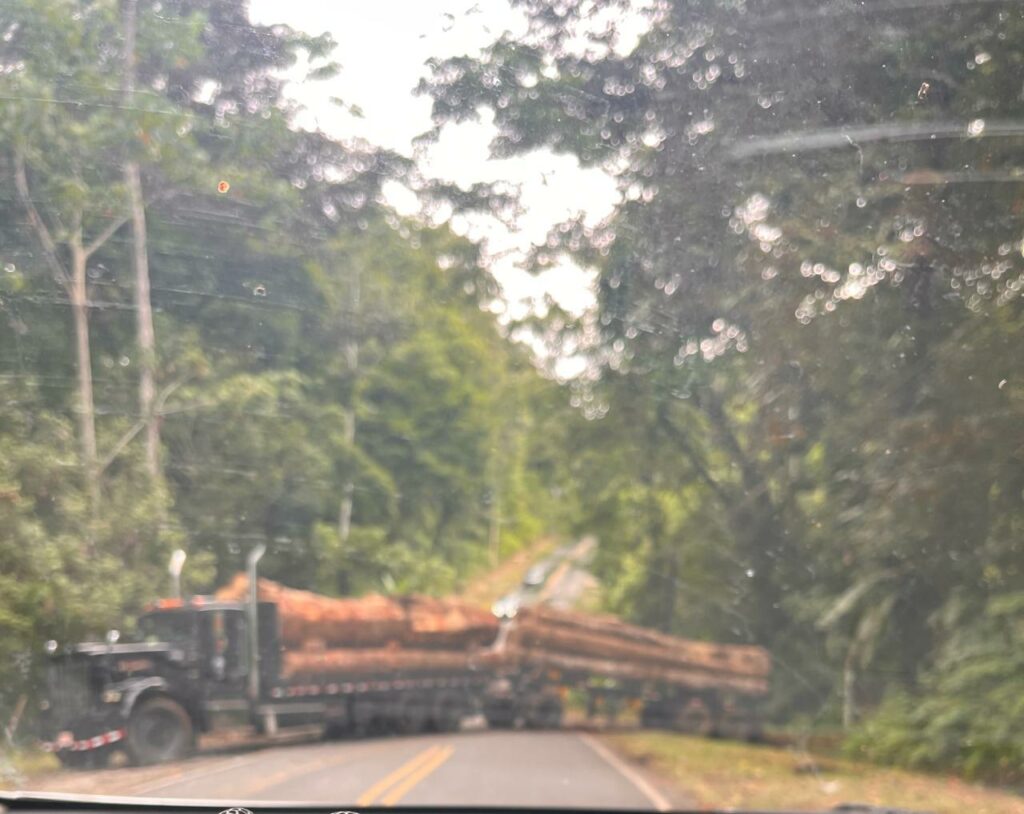
The unfolding events at Gandoca-Manzanillo have exposed a complex web of environmental mismanagement, corruption, and political entanglements that challenge Costa Rica’s image as a global leader in conservation. What began as a localized issue of illegal deforestation has spiraled into a national scandal involving high-ranking officials, business interests, and possible abuse of public office.
At the heart of the controversy lies the tension between economic development and environmental protection. The irregular granting of logging permits, the failure to enforce key legal rulings, and the possible exploitation of land by powerful political and business elites demonstrate the fragile balance between protecting natural resources and promoting development. While Costa Rica has long been celebrated for its environmental policies, this case serves as a stark reminder of the institutional vulnerabilities that exist within its governance structures.
As the investigations proceed, there is hope that the legal process will bring accountability and restore public confidence in the country’s environmental oversight. However, the broader implications of this case stretch beyond the legal arena, underscoring the need for reforms in how Costa Rica manages its natural heritage. Stronger enforcement mechanisms, increased transparency in government dealings, and continued public pressure are essential to prevent further damage to Costa Rica’s protected areas.Ultimately, the Gandoca-Manzanillo scandal has highlighted the importance of vigilance in protecting the country’s most valuable resources—its biodiversity and natural ecosystems. The path forward will require a renewed commitment to sustainable development that balances economic interests with the long-term preservation of Costa Rica’s unique ecological treasures.







